Vignettes: A Taste of Paris - off the beaten path
- Karyn Farrell
- Jul 6, 2023
- 17 min read
Updated: Sep 27

Petit Palais, Paris
Disclosure: some of the links on this site are affiliate links with companies I have chosen to partner with. If you make a purchase through these, I may receive a small commission at no extra cost to you. Thank you for your support!
It's a sunny Sunday afternoon as we make our way to Canal Saint-Martin. Tables and chairs spill out onto the pavements and the narrow streets are alive with animated conversation. Enticed by the sounds of live jazz, we find ourselves in La Caravane, a lively bar with a laidback vibe. In what feels like a scene from a Woody Allen movie, we bag ourselves a window seat and a glass of wine, a medley of 1940s jazz tunes transporting us to a Paris of another era.
On the corner of Rue de la Fontaine au Roi in the Oberkampf district, La Caravane is a cheap and cheerful bar, its walls lined with old photographs and shelves heaving with vinyl. Service is relaxed and friendly, the atmosphere welcoming. Definitely somewhere to linger for a few hours.
La Caravane, 35 Rue de la Fontaine au Roi | Metro: Goncourt or Parmentier
Table of contents:
All main points of interest, restaurants and bars featured in this article are pinned on the map above for your convenience
Highlights: Off the beaten path in Paris
Canal Saint-Martin is a 4.5 kilometre waterway to the north of the city, its leafy green banks lined every afternoon with workers enjoying an al-fresco lunch, and every evening with groups of people picnicking and sharing bottles of wine under a canopy of beautiful old chestnut trees. It also refers to one of Paris' coolest neighbourhoods, fizzing with youthful energy and with a bustling nightlife. Trendy bars and hipster restaurants sit alongside artisan cafés, traditional bistros and colourful boutiques. It's fast becoming one of my favourite areas of the city
You won't want to miss the mesmeric immersive art experience at the Atelier des Lumières, just a short walk from Canal Saint-Martin. Occupying what was a 19th century foundry, this vast warehouse-type space showcases the life and works of modern and contemporary artists from a unique perspective, a place to literally and metaphorically immerse yourself in art.

Summer 2023 and the featured artist is Marc Chagall, a prolific painter who lived to the grand old age of 98. Nab yourself a seat and watch as the history of his fascinating life unfolds before your eyes, projected digitally across every inch of space. We follow his story from the early years in Russia, to his artistic awakening in Paris in the early 20th century, through to the post-war years as an exile in New York City and back to France once more.

Photographs and paintings are accompanied by a soundtrack of classical music, klezmer and jazz, carefully chosen to create a sense of place and time in the artist's life. It's a glorious visual and sensory experience that will melt the most cynical of hearts.
Here's a glimpse of what to expect:
CHAGALL, PARIS–NEW YORK: February 17, 2023 to January 7, 2024
Atelier des Lumières, 38 Rue Saint-Maur
Metro: Père Lachaise, Rue Saint-Maur, Voltaire or Saint-Ambroise
Our restaurant pick day 1:
On a side street off the canal lies ÅKE - Table & Vin, a bustling Swedish-owned restaurant and wine bar serving up a small menu of seasonal plates for sharing. Its pared-back Scandi décor and casual vibe belies the utterly sublime culinary experience that awaits you. This is high-end cuisine from start to finish but without the price tag - sharing plates range from €11 to €19 and portions are generous. They recommend 3-4 plates per couple, which was more than enough for us. Take note - you do not want to skip dessert so make sure to leave room. Controversial as this may sound, (sorry Italy...) but we think we may have found a contender for the world's greatest panna cotta.
What we had: a fresh and zingy cod ceviche with chargrilled courgettes and pomelo; marinaded chicken thighs on a bed of summer ratatouille and, the pièce de résistance, golden gnocchi with confit tomatoes, dotted with creamy stracciatella and served with a crunchy almond salsa. You may not want to share this one. And the panna cotta, of course.
Our tip: let the sommelier Julien choose your wine. They have a huge list of options by glass and bottle (glasses start from a reasonable €7). The list is predominantly French and favouring the natural varieties but don't let the latter put you off. If your experience of natural wines is of the pungent, slightly fizzy varieties, then you'll be pleasantly surprised by what's on offer here. The Coteaux Bourguignon was light, silky-smooth and very drinkable. Debating whether or not to order another glass with dessert as we had to get up early the next day, Julien steps in with a recommendation. "Try this one" he says. "It won't give you a hangover. In fact, you'll wake up filled with life"... He wasn't wrong.
ÅKE - Table & Vin, 8 Rue Marie et Louise, Paris 75010
Highlights: Off the beaten path in Paris day 2:
A sunny Sunday morning starts with a walk on the Viaduc des Arts, not dissimilar to New York's High Line.

Off the beaten path in Paris - quite literally. The leafy green walkway, the Promenade Plantée, is a fabulous public amenity, running across the top of a beautiful old red-brick viaduct. The route is lined with gardens, bursting with roses and other colourful blooms, and there are plenty of benches to sit in the shade to read or just to take in the gorgeous street views, revealed occasionally through gaps in the foliage.

Dating to the mid 19th century, train tracks once ran the length of the viaduct, servicing a once-significant artery through the 12th Arrondissement, from Place de la Bastille to the eastern reaches of the city. Replaced by the underground train system, the viaduct languished in disrepair until a substantial restoration project was undertaken by the city council in the late 80s and early 90s.
Today, the tree-lined Promenade Plantée runs for 5kms from Bastille to the Bois de Vincennes, the capital's second-largest green space (after Bois de Boulogne). The elevated walkway is dotted with little gardens and water features and, at this time of year, resplendent with summer blooms. The air is scented and clean, a world away from the traffic and noise below.
Its elevated position offers a wonderful vantage point to enjoy the fabulous architecture. From a practical point of view, public toilets are plentiful along the route, as are drinking-water fountains. There's also an outdoor table-tennis set-up. if you're so inclined.
The walkway comes to an end quite abruptly at the eastern end - walk up the stairs to your right and follow the signs for Bois de Vincennes.
Promenade Plantée / Viaduc des Arts, 1-127 Av. Daumesnil | Metro: Bastille

Bois de Vincennes is a lush-green oasis of tranquility to the east of the city. The first thing to know - it's absolutely enormous, spanning almost 2,500 acres. It's said that you could fit the first six arrondissements into the park and still have room to spare - just something to keep in mind if you're planning to cover it on foot. You might want to consider hiring a bike - there is an extensive network of cycling and walking tracks crisscrossing the park and a few spots to hire bikes. There are also a number of city bikes stations dotted across the area Click here for docking spots, rates and subscriptions.
One of the nicest and most relaxing ways to spend an afternoon is a boat trip on one of the lakes (unless you're the one rowing, that is). The park has a grand total of four lakes with row-boat hire available on the lovely Lac Daumesnil (€14.50 for an hour). Manicured lawns slope down to the water while its two islands are positively bursting with verdant life. The faux ruins of the Temple of Love and the picturesque suspension bridges complete the picture, evoking pastoral scenes beloved of the Romantic painters.

On the northern outskirts of the park stands the Chateau de Vincennes, a magnificent example of medieval architecture dating to the 14th century. Described as a 'royal fortress', it served as a luxurious residence for the king to entertain his family and friends, while simultaneously providing a robust defense against any potential enemies.

Surrounded by a deep moat, the outer walls enclose a vast area of over a kilometre, and are topped with a grand total of nine towers. It also boasts the largest keep in Europe, standing at an impressive fifty metres in height with turrets and lookout windows at every angle. You'll also find a drawbridge and every imaginable defense mechanism to keep enemies at bay. Paranoid these royals may have been but it's quite spectacular.
Métro: Chateau de Vincennes
Lunch recommendation day 2:
And now for some lunch.... There are plenty of options to choose from in the charming town of Vincennes so don't go jumping on the Métro back to Paris just yet. On a balmy Sunday afternoon, the outdoor terrace at La Table des Troys was a winner, located opposite the main entrance to the chateau, luring us in with delicious smells wafting from the kitchen.
An irrefutable fact - no-one makes a salad quite like the French. Rather than a number of disparate elements plonked together on a plate, a French salad is the perfect sum of its parts and these two were no exception. I opted for the Salade au Saumon Fumé, a smoked salmon salad with shrimp and avocado tartare, drizzled in lemon. Fresh and zingy, it came with huge chunks of salmon that melted in my mouth. The Salade Montagnarde was also piled high with ham, hard-boiled eggs and potatoes, topped with walnuts. With salads priced from €15- €20 a pop, expectations were high and thankfully this place did not disappoint. With a carafe of a delicate blush Rosé and two excellent coffees, the bill came to €63 before tip. Worth every penny.
La Table des Troys, 2 Av. de Paris, 94300 Vincennes | Métro: Chateau de Vincennes
Day three starts with the obligatory stroll along the Seine. Setting off from the lovely Hotel Riesner (more on that below) we detour through the ridiculously pretty Rue Crémieux - one of the most colourful streets in Paris.
The morning sun is beating down as we amble aimlessly along the northern banks of the river. Paris is a city best explored on foot and if truth be told, I could happily do nothing else but pound its pavements, entranced by the jaw-dropping architecture, vast green spaces and hidden courtyards. It never gets old and there's always something new to discover, like this fantastic new installation at the Louis Vuitton HQ.
Upon approach to the Pont Neuf, the monumental figure of contemporary artist Yayoi Kusama comes into view, looming tall above the surrounding buildings. The result of a collaboration between the fashion giant and the Japanese icon, the striking red-haired figure is impossible to miss, pointing her paintbrush at the building's façade. It's madly wonderful.
Art and lunch with a view

Let me introduce you to one of the best-kept secrets in Paris. Yes, I agree that the exuberantly extravagant façade of the Petit Palais looks anything but secret but what lies beyond those doors is a treasure trove of art, history and culture. Minus the droves of tourists, of course, and the selfie-stick wielders. At the heart of it all stands the utterly spectacular inner courtyard garden, its colonnaded walkways dripping in lush green vegetation and exotic plants. It's here you'll find the Café - Restaurant Le Jardin du Petit Palais, serving up a simple menu in an incomparable setting.

Y
ou'll be hard-pressed to find a more beautiful location for a casual lunch in the city. They don't take bookings so it's first-come, first-served for the prime tables on the garden terrace. The good news is that the turnaround is pretty quick. We lucked out and within ten minutes we'd bagged ourselves a table overlooking this view. Serving up a small but tasty menu of salads, sandwiches and quiche, it's surprisingly good value for money, considering the location. Lunch for two, including two glasses of Rosé and sparkling water came to €42.
Make sure to check out their small but delightful permanent collection and sculpture gallery, both free to visit. In fact, only temporary exhibitions incur a charge. Highlights include an affecting portrait by Cézanne, an exquisite study in the effects of light and shade by Alfred Sisley, and the beautiful Sunset on the Seine at Lavacourt by Impressionist master Claude Monet. A bench has been strategically placed in front of the latter - sit and watch as the sun sets low over the frozen lake as the bare branches of the trees seem to shiver in the wind. Photographs rarely do it justice but you can view a high-resolution version from the museum's site here.
The Petit Palais was designed by Charles Girault for the 1900 Universal Exhibition, opening as a museum in 1902. I loved the contrast between the monumental classical architecture on the exterior, and the bright and airy spaces within. Huge windows offer views of the garden and trees beyond, while vast openings onto the inner courtyard garden encourages a natural flow of visitors and blurs the lines between inside and outside. It's unmissable.

Petit Palais, Av. Winston Churchill, 75008 | Métro: Champs-Élysées - Clemenceau / Franklin D. Roosevelt
A concert at the iconic Philharmonie de Paris
End your evening on a high note with a concert at the extraordinary Philharmonie de Paris.

One of the highlights of our trip was an evening with jazz extraordinaire Wynton Marsalis and his, quite literally, big band. It was one of those once-in-a-lifetime moments, hearing one of your musical heroes in one of the best venues in the world. The auditorium is stunning, designed for the perfect acoustic experience. And it's not just jazz and classical, by the way. Interpol was one of the headline acts in July 2023.
The sound was pitch-perfect, the musicians remarkable & the building is nothing short of extraordinary. Architect Jean Nouvel’s design is jaw dropping, never more so than at sunset as the ever-changing light reflects beautifully across its titamium surface - it's almost other-wordly . A very special evening; one we will never forget.
Philharmonie de Paris, de la Musique, 221 Av. Jean Jaurès, 75019 | Métro: Porte de Pantin
Shopping: one for vinyl and jazz fans
Paris Jazz Corner
Staying on the subject of jazz.… On the corner of Rue de Navarre and Place Émile Male stands the wonderful Paris Jazz Corner, rammed from wall to wall with every jazz album known to man. It's almost too much to bear. Palpitations are likely.
If you’re looking for something obscure or hard to find, this is the place to come. Its iconic blue façade is instantly recognizable: a picture-perfect landmark evocative of a Paris from another era. A record player on the counter plays an eclectic mix of tunes to lure you over the threshold but beware - once you’ve stepped through the doors, there’s no turning back. Easily somewhere to lose a few hours. And your hard-earned cash.
Paris Jazz Corner, 5 Rue de Navarre | Metro: Place Monge
A day trip to Normandy: Fondation Monet

An early start on Monday and we're Normandy-bound to visit the house and gardens of painter Claude Monet in Giverny. The train from Paris fittingly departs from Gare Saint-Lazare, a favourite subject of Monet's for a time, painting it over and over again in varying weather conditions and times of day. Upon arrival at the platform we noticed rather a lot of people boarding the train. "They can't all be going to Monet's house, can they?" we whisper to each other aghast... It turns out, oh yes they can. Not such a secret anymore it seems.
Start your visit by walking in the opposite direction to the masses. Before entering the main estate, take some quiet time to stroll the inordinately pretty streets of Giverny, with its shuttered stone buildings and flower-filled patios.

Claude Monet lived in Giverny for forty three years: from 1883 until his death in 1926. Like his paintings, the vivid palette throughout the estate is joyous: bright, bold and wonderful. The pink stucco house contrasts beautifully with the green shutters while flowers and plants seem to explode in a riot of colour across the façade. It's quite a poignant experience to walk in his footsteps through the rooms of his lovely home; to stand in his simple bedroom and gaze out the window to the garden views he awoke to every morning.
The two gardens of the estate are undoubtedly up there with his greatest masterpieces, their colour schemes, of course, no happy accident. Their beauty lies in the controlled wildness: the artist approached gardening in the same way he painted, choosing plants on the basis of their complementary colours, creating perspectives and highlighting areas of light and shade.
In front of the house are the gardens of the Clos Normand, a series of perfumed rose-covered arches creating a canopy to the front door. On either side are deliciously vibrant flower-beds in a riot of colours. The entire effect is wonderful.

Across the road is the world-famous Water Garden, best known for its waterlilies, dramatically drooping weeping willows, exotic oriental plants and of course, that iconic green Japanese bridge. Breathtakingly stunning, it's not hard to see how his surroundings influenced the artist every day of his life. Most significantly, this garden was the inspiration for his monumental series Nymphéas, on view today in the wonderful Musée l'Orangerie in Paris.
From 1897 until the end of his life, he dedicated his time to this series, capturing the fleeting effects of light on the waterlilies, the atmosphere of the sky at different times of day reflected in the water. Verging on abstraction, they are hypnotic and emotive, a love letter to his beloved home and garden.

As visitors, we are privileged to have the opportunity to immerse ourselves in scenes that are, quite literally, from a painting. Sadly, the contemplative garden space designed by the artist no longer feels like a place for reflection, as queues of people line up for selfies on the iconic green bridge. Instagram has a lot to answer for.
It's incredibly beautiful and was a moving experience for me, a lifelong admirer of Claude Monet. However our visit was slightly marred by the throngs of tourists at every turn. Despite the timed ticketing system, it still felt like there were too many people on site at one time. Perhaps in future they may consider limiting ticket numbers per day. But maybe that's an old-fashioned idea...
To beat the lunchtime crowds, here's an insider tip. Leave the masses (and the long queues) behind as you knowingly walk past the cafés and restaurants grouped at the entrance. Instead make your way down Rue Monet towards the church: on the right, tucked away under a leafy courtyard terrace, is the lovely Au Coin du Pain'tre. Come for the hearty Croque Monsieur with fries washed down with a crisp and light Rosé. Staff are welcoming and friendly, the vibe relaxed.
Au Coin du Pain'tre, 73 Rue Claude Monet, 27620 Giverny
Practical Information: Getting to Fondation Monet
Trains: Paris Gare Saint-Lazare to Vernon. Direct trains are infrequent so consider booking ahead. Journey takes approx. 50 minutes. Private shuttle buses are scheduled to meet each train and cost €10 round-trip. Or if you're feeling energetic, you could walk the 6kms from Vernon to Giverny.
Full details on getting there can be found here
Pre-booking tickets online is advised here: €13 - adult
Musée Picasso
With a few hours to kill before our flight home, we paid a visit to the Picasso Museum in the Marais. First let's take a moment to appreciate the fabulously elaborate entrance hall.

In celebration of the artist fifty years after his death, the museum has collaborated with designer Sir Paul Smith to present the collection in a new way. His bold use of colour and patterns is highly effective in illustrating the changing moods and styles in the artist's life.
Picasso Celebration: The Collection in a new Light, runs until 23rd August 2023
Musée National Picasso-Paris, 5 Rue de Thorigny, 75003
Where we stayed:
Hôtel Riesner is a cool, design-led hotel that gets the small details right.

Décor is chic and unfussy with an Art Deco influence, staff are friendly and always ready to help, and the location is great, within walking distance to the Bastille area, Le Marais and the Latin Quarter on the other side of the river. Breakfast is served in a bright plant-filled room: the buffet offers a wide selection of cheese and meats, yoghurt, fresh fruit and crusty bread. Best of all is the machine to juice your own oranges every morning.
Rooms are small (it's Paris after all...) but the beds are ridiculously comfy - I slept like a log every night. Bathrooms come with a huge rain shower and are stocked with beautifully scented, natural bath products. It's not cheap but it's good value for Paris, all things considered. B&B rates from €203 per night.
Hôtel Riesner, 19 Rue d'Austerlitz, 75012 | Métro: Gare de Lyon / Quai de La Rapée
Other great places to stay: best affordable boutique hotel in Paris

On my previous visit, I stayed in Hotel Henriette on the utterly charming Rue des Gobelins near the famous Mouffetard district, not far from the Latin Quarter. It's a small boutique hotel which ticks every box and is great value for money, if you can manage to get a booking.
The staff are fabulous and supremely helpful, the decor is stunning, the location is perfect (1 minute from Les Gobelins Metro station), the bed is really comfortable with the BEST pillows I've ever slept on and the bathroom products are Nuxe. And then there's the breakfast... oh my! Fresh crusty bread and croissants straight from the oven, a selection of cheese and meats, fresh fruit, eggs and even slices of avocado. The best hotel breakfast I've ever had.
Another terrific option is Hotel le A, just five mins from Champs-Élysées and Arc de Triomphe. Décor is modern Scandi-style and we stayed in a Junior Suite, which I would recommend if you can spend a bit extra as it is worth it for the extra space. The bed was super-comfortable while the bathroom had a luxurious rain-shower and products from l’Occitane.
Again I have to mention the breakfast: the hotel provides a continental buffet with crusty bread, cheese, meats, yogurt, cereal and freshly squeezed juice, and the cafetiéres of coffee are a nice touch. In addition, hot food is available to order on request (they make a mean omelette). Service comes with a broad smile and a friendly chat.
Eating and Drinking: we also loved...
Les Affranchis - a traditional brasserie with street-side seats to enjoy a Happy Hour cocktail or two. Décor is cosy and inviting, staff are warm and friendly, and food is simple but delicious. Good value too. Order the Omelette Complète.

Les Affranchis, 14 Av. Daumesnil, 75012
Next up is Camille, a traditional French bistro renowned for its steak, duck and cocktails, in no particular order. Located in the heart of the vibey Marais district, Camille has long been one of our firm favourites. Wood paneling and red leather banquettes create a cosy, intimate setting and service is always excellent - professional yet warm and welcoming. They make a fine Kir Royale so don't skip an aperitif. And if their famed Tarte Tatin is on the menu, don't even consider the other options. This will be the star of the show.

Camille, 24 Rue des Francs Bourgeois, 75003 | Métro: Hôtel de Ville
Of course no trip to Paris is complete without a stroll through the hilly district of Montmartre, the bohemian heart of the city. It may be touristy in certain spots but has a charm that's impossible to resist. You'll find yourself lured into frequent pitstops by a myriad of tempting bars and cafés.
A glowing recommendation from two friends led us to La Boîte aux Lettres, a cosy and unpretentious bistro serving traditional cuisine with a contemporary twist. A popular spot with locals and tourists alike, it's always busy so make sure to book ahead. Starters were good and main courses excellent, but the pièce de résistance was dessert - you need to save space for their famed Pain Perdu (basically jazzed-up French toast). It was so good, in fact, that it didn't last long enough to take a photo. Always a good sign.
La Boîte aux Lettres, 108 Rue Lepic, 75018
Practical Info:
Traveling with a group? Welcome Pickups offer excellent value for money and a reliable airport transfer service. Book your transfer here
If you're planning on travelling a little further afield, one of the best value sites we've used to date is Discover Cars, comparing prices across 700 suppliers.
For a greener alternative, France's main cities are very well connected by rail, with reasonably priced fares too. Trainline is my go-to site of choice for train bookings: it's user-friendly with cheaper fares than other sites. Book here.
Need to leave your bags somewhere for a few hours? For €5 per bag per day, Radical Storage conveniently has outlets all over Paris. Book in advance here.
I've written pretty extensively about Paris to date. It's one of my favourite cities of all time, and one I continue to return to. You can read my earlier posts below.
Bonnes vacances
Karyn xx













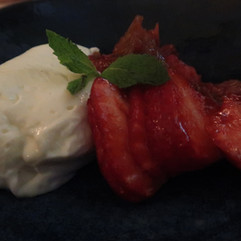












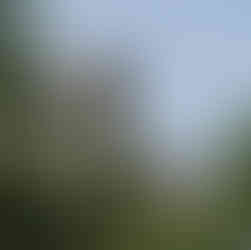






























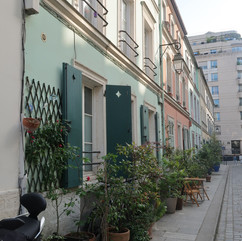







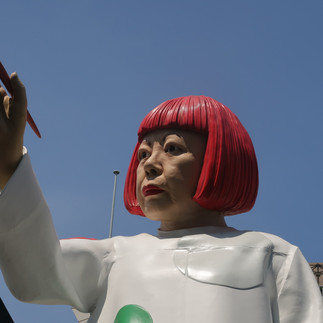





















































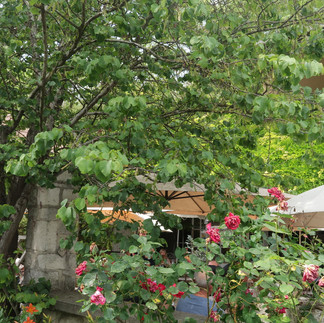



































Comments